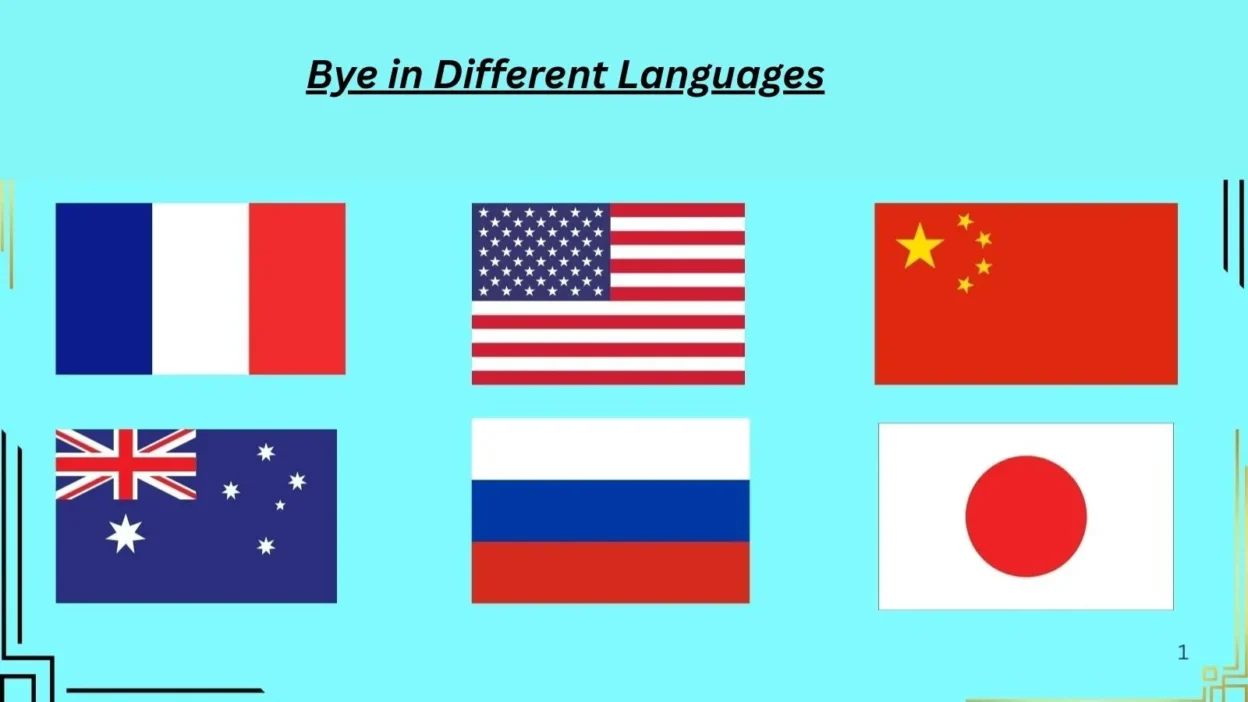When people search “how do you say bye in different languages”, they’re usually curious about connecting with others across cultures, traveling abroad, or learning new phrases for fun.
Saying goodbye is one of the most common expressions we use in daily life, but every culture has its own unique way of expressing it.
This article will help you discover how to say bye in different languages, understand the context behind each word, and learn how to use them naturally in conversation. By the end, you’ll feel confident using these phrases when meeting people from around the world.
Why Learn How to Say Bye in Different Languages?
- Travel – Knowing local goodbye phrases makes your interactions warmer and more respectful.
- Friendship – Saying goodbye in someone’s native language can strengthen bonds.
- Cultural Appreciation – Each word carries its own history and cultural meaning.
- Language Learning – Mastering simple phrases like greetings and farewells is a great start.
How to Say Bye in 25+ Different Languages
Here’s a list of common ways to say bye around the world:
- English – Bye / Goodbye
- Spanish – Adiós
- French – Au revoir
- German – Tschüss / Auf Wiedersehen
- Italian – Ciao (can mean hello and goodbye)
- Portuguese – Tchau / Adeus
- Russian – Пока (Poka) / До свидания (Do svidaniya)
- Chinese (Mandarin) – 再见 (Zàijiàn)
- Japanese – さようなら (Sayōnara) / じゃね (Ja ne – casual)
- Korean – 안녕 (Annyeong – casual) / 안녕히 계세요 (Annyeonghi gyeseyo – formal)
- Arabic – مع السلامة (Maʿa as-salāmah)
- Hindi – अलविदा (Alvida) / नमस्ते (Namaste, also used for greeting & farewell)
- Turkish – Hoşça kal (if you’re leaving) / Güle güle (to the one leaving)
- Greek – Αντίο (Adío) / Γειά σου (Yia sou – informal)
- Dutch – Dag / Tot ziens
- Swedish – Hej då
- Norwegian – Ha det
- Finnish – Hei hei / Näkemiin
- Polish – Do widzenia / Pa
- Czech – Ahoj / Na shledanou
- Hungarian – Viszlát / Szia (also hello)
- Thai – ลาก่อน (La k̀xn) / บ๊ายบาย (Báai-baai – casual, borrowed from English)
- Swahili – Kwa heri
- Hebrew – Shalom (also means hello, peace, and goodbye)
Tips for Using These Words Naturally
- Match the formality – Some languages have casual and polite versions (like Korean or Japanese).
- Listen first – Notice how locals say goodbye in real conversations.
- Smile & gesture – A warm smile or wave adds friendliness no matter the language.
- Practice pronunciation – Even a small effort shows respect and will be appreciated.
Conclusion
Learning how to say bye in different languages opens doors to better communication and cultural understanding. Whether you’re traveling, making friends online, or just expanding your knowledge, these simple words go a long way. Next time you part ways with someone from another culture, try saying goodbye in their language—you might just make their day!



